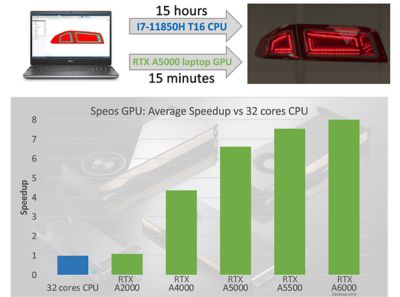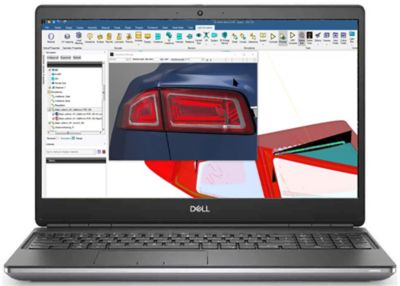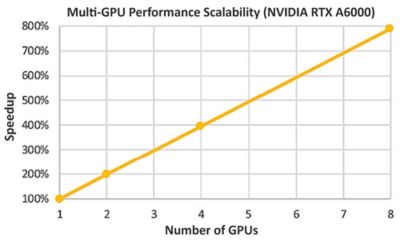-
United States -
United Kingdom -
India -
France -
Deutschland -
Italia -
日本 -
대한민국 -
中国 -
台灣
-
Ansys stellt Studierenden auf dem Weg zum Erfolg die Simulationssoftware kostenlos zur Verfügung.
-
Ansys stellt Studierenden auf dem Weg zum Erfolg die Simulationssoftware kostenlos zur Verfügung.
-
Ansys stellt Studierenden auf dem Weg zum Erfolg die Simulationssoftware kostenlos zur Verfügung.
-
Kontakt -
Karriere -
Studierende und Akademiker*innen -
Für die Vereinigten Staaten und Kanada
+1 844,462 6797
ANSYS BLOG
December 1, 2022
GPU-Based Compute for Ray Tracing Makes Simulating Light More Accessible and Powerful Than Ever
Ray tracing is an integral process in the design of complex, precise optical and lighting systems, whether for automotive interior and exterior lighting, consumer electronics, or aerospace applications. Cohesive optical design is essential for optical and human factors impacting usability, including stray light conditions and the effects stray rays on human and sensor perception.
Ansys Speos provides simulation capabilities for these applications by performing intense calculations that enable designers to visualize the impacts of ray activity and adjust accordingly. The more accurately they can visualize, the fewer expensive prototypes they're required to make and the faster they can go to market with a viable optical instrument.
But as much as simulation speeds up this process, the computations themselves require time to calculate, throwing a potential bottleneck into the timeliness of the design process. For many years, Speos has supported high-performance computing (HPC) on external clusters as an enhanced source of processing power for ray tracing, enabling supercomputer capabilities for running Speos operations much faster. Still, HPC is out of reach for many Speos users as they are faced with initial costs, setup complexity, and the ongoing costs of deploying an HPC cluster in the cloud.
Graphic processing units (GPUs) offer an opportunity to accelerate Speos calculations without requiring increased central processing unit (CPU) capacity. Recent developments in NVIDIA GPUs have enabled engineers usinf Speos to evolve affordable solutions that greatly accelerate ray tracing without compromising the accuracy of the results.
This blog discusses the two main capabilities enabled by this synergy — Speos GPU-Compute and Speos Live Preview — along with additional capabilities when deploying GPU acceleration in an HPC environment.
Speos GPU-Compute: Improve Processing Time by up to 60x per Chip
A few years ago, Ansys introduced the idea of using GPUs for running ray tracing computation in Speos, and the outcomes have been astounding.
Here's how it works. GPU-powered systems are very efficient at doing small iterations in parallel — in many cases, more efficient than the CPU itself. By using this strength, and including the support of NVIDIA dedicated hardware acceleration for ray tracing in the form of the NVIDIA OptiX technology platform, we enabled Speos to generate the fastest possible computations.
How fast is it? In our testing on a single laptop, we found that a simulation taking 15 hours running on the CPU can be completed on an NVIDIA RTX A5000 GPU in 15 minutes, or a 60x gain. With two GPUs, the advantage scales directly to 120x faster.

Fig. 1. Use Speos GPU-Compute to decrease simulation times by 60x per NVIDIA RTX GPU.
With GPU-Compute, you get:
- Powerful NVIDIA GPU compute built right into your desktop — no HPC, no cloud.
- Improved simulation times by up to 120x with no complex hardware setup.
- Flexibility to revert to CPU compute with the very same license.
Speos Live Preview: Iterate Designs Faster with Fewer Prototypes
A further application of the solver we've developed for GPU-Compute is the ability to quickly preview the simulated impact of design changes with Speos accuracy, all within an uninterrupted, iterative design workflow.
Let's say you're not ready to invest in GPU-Compute, but you want to make use of the added power of the latest NVIDIA technology. Or, you might be a GPU-Compute user interested in running quick simulations on a series of design change ideas without the need to run full ray tracing for each one.

Fig. 2. Preview design changes in real time with full accuracy thanks to NVIDIA GPU acceleration.
Speos Live Preview enables real-time simulations of optical designs using the computing power of GPU acceleration. Use the Live Preview simulation to test design changes more iteratively and interactively in less time, further speeding up your overall design development.
With Live Preview, you can:
- Navigate the viewpoint toward the optical object.
- Maintain the full accuracy of Speos as required for numerical certification.
- Check photometry (true/false color) and human vision appearance.
Live Preview runs best on NVIDIA RTX GPUs, and is also available in Siemens NX version of Speos (SNX).
Speos HPC-GPU: Scale Up Ray Rracing Across Parallel GPUs
Perhaps the most exciting development out of these latest advancements is the capability for GPU-side calculations and HPC to work together.
Using Speos HPC-GPU, engineers can achieve linear scalability. Linear scaling means there is no loss of overall cluster power no matter how many nodes and GPUs are added, giving you unfettered and predictable returns on investment as a product of reduced simulation time.

Fig. 3. Achieve linear scalability across HPC clusters using stacked, accelerated GPUs.
Speos HPC-GPU gives you:
- Massive, scalable parallel computing across all nodes in a cluster.
- License flexibility with license sharing across CPU/GPU nodes.
- Speos compatibility across nodes running either Windows or Linux.
New enhancements to Speos HPC-GPU help increase simulation performance through GPU acceleration deployed on a cluster. We support multi-GPU, multi-node deployment with accurate simulation, including dynamic camera effect.
Meanwhile, our Live Preview and GPU-Compute features offer fully tested, accurate access for Speos users to real-time preview capabilities and accelerated, GPU-side ray tracing computation support for refining and realizing your optical designs faster and more completely than ever before.
Join us at the IDEAS Digital Forum where NVIDIA RTX A6000 will be featured.










